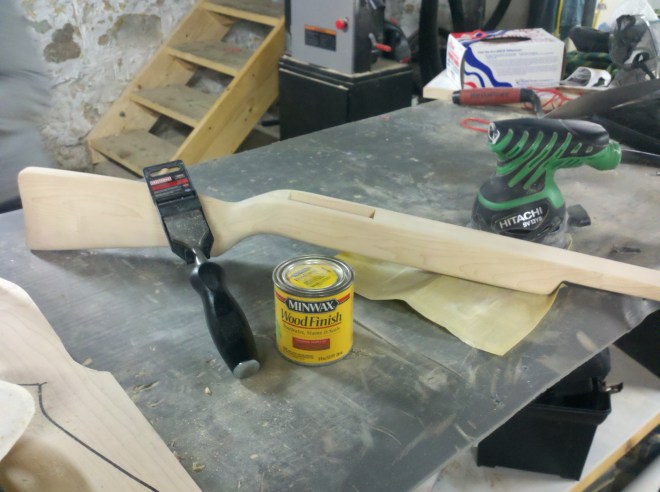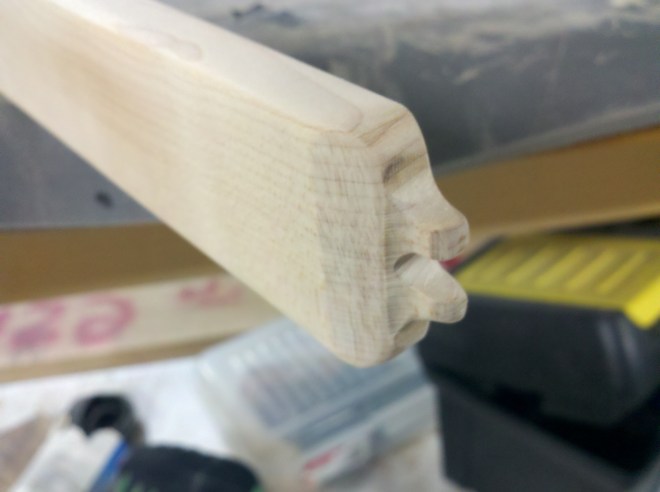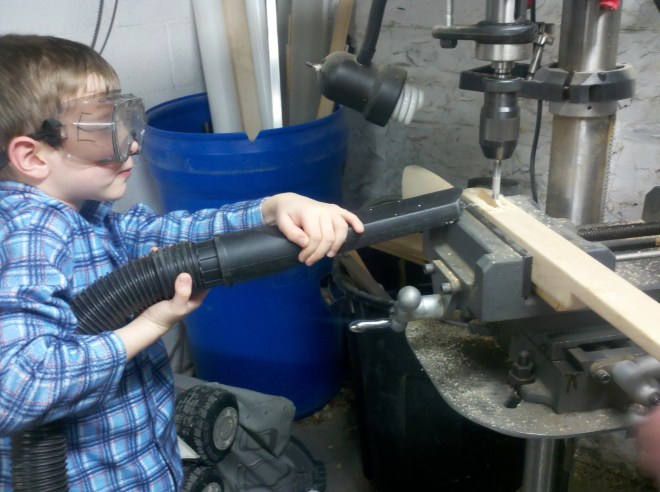I spent a bit of time this evening taking measurements and verifications, adding pin holes, and communicating with Dixon Tool and Die about pricing, etc…
Here are the 4 key parts in the design:
Trigger: Pivots on a 3/16″ dowel pin. As the trigger is pulled, the two protrusions from the front move downward into the actuators. The one side is milled out 1/16″ deeper than the other, so that the one side of the rubber band gun fires before the other. A 2 stage trigger.

Hammer: The hammer is not a hammer in the sense that it strikes something, but only in that it resembles the hammer from a gun. It pivots on a 3/16″ dowel pin. At the bottom is a milled out section directly below the pivot point, providing for a linear, smooth release. The notch and hole on the front are used to attach a spring, which provides an automatic-reset for the hammer.

Actuator: Because I couldn’t think of a better name at the time. This is the piece which holds the hammer from being released, and also contacts the trigger, both providing a linkage to be released, as well as spring tension up on the trigger. Since the trigger does not have a spring, it relies on the contact from this part to provide springiness.

Receiver: For simplicity, this is milled and drilled from a 1.000 x 1.500 aluminum tube with 0.125″ thick walls. It is responsible for holding pins, which in turn hold the rest of the parts.

Well, that’s all for now.
















